Independent Management Consultant
What’s Ahead of Robotic Process Automation (RPA) and Artifical Intelligence (AI) in the 9th Six Sigma and Process Improvement Conference 2018
by Praveen Tatia, Vice President, Business Excellence Leader, Accenture PH
Introduction
In the age of the Fourth Industrial Revolution (4R), business transformation, digital innovation, and customer experience are the pillars necessary to navigate current market shifts and changing consumer preferences.
Where is your company in its digital business transformation journey at this stage?
To be successful in the new age of commerce, size is no longer a guarantee for success. In fact, small is the new normal. Business models are changing and relationships are redefined. To stay ahead of the curb, organizations are being challenged to embark on a transformation journey that embeds digitization, remarkable design for customer experiences and continuous process improvement program.
The Six Sigma Conference is rooted in process excellence and improvement as a strategy to business transformation. Coupled with digital tools, innovation becomes real for re-engineering processes and value propositions that result to business growth, sustainability and relevance.
As process owners and transformational leaders embraced innovation and powerful continuous improvement strategy, Six Sigma combined with other methodologies become vital tool kits in upgrading skill sets of people, building human capacities, and engaging them in the culture that tolerates change and freedom to explore big ideas and work excellence.
The conference will help business leaders, owners, and professionals cope with the speed and dynamics of change in the market through data-driven decision-making and innovative thinking.
CEOs, Presidents, Managing Directors, General Managers, Business Owners, Senior Level Managers, Process Owners/Analysts, Lean and Six Sigma Practitioners, Strategic Planners, Corporate Planning Executives, Project Managers, Customer Experience (CX) Officers, Innovation Champions, Team Leaders, IT Managers, Growth Officers, Industrial Engineers, Entrepreneurs, and those involved in continuous improvement and operational excellence programs in their organizations.
PHP16,999 + VAT for 2 days, inclusive of meals and conference kit.
US$ 450 + VAT for Foreign Nationals.
Discount Scheme
– Package of 5 Delegates + 1 Free
– 20% discount for Academe/Students/Government
– 5% Discount for Past Delegates in Fiera Programs

Independent Management Consultant

Vice President, Business Excellence Leader,
Accenture, Manila

Lean Six Sigma Master Black Belt,
Philippine Certifier for Six Sigma Experts LLC USA

Managing Director,
Cogniseed Consulting Inc.

Managing Director
and Founder,
Technopoly Inc.

Managing Consultant, MVHS Management Consultancy,
Six Sigma Black Belt

Managing Consultant,
Six Sigma Consulting Manila

Country General Manager,
Crawford & Company Global Business Service Center

Director and Senior Consulting Partner,
Technopoly Inc.

Lean Six Sigma Expert,
ScrumMaster®
1. Planning your Transformation Initiatives from Strategy to Execution:
A Practical Approach
Defining your strategy and transformation journey with clarity and communicate to different levels across the organization. The need to implement business structure modelling to align strategy with execution. Effective ways to drive change through an integrated business architecture.
2. The Four Pillars to exceeding customer expectations through continuous process improvement (CPI)
CPI is necessary to keep abreast with rising customer expectations but lacks direction on practical implementation. Organizations rely on traditional technology that cost too much, take a long time to customize, and never actually meet their needs.
This session will deep dive into 4 pillars of CI needed to exceed customer expectations and drive business growth. It shows new practical approach to implementation of the framework.
The 4 pillars are: adoption and engagement, scalability, flexibility, and a culture of innovation needed to meet the needs of increasingly demanding customers.
3. Digital transformation in the Era of Low Code
This is attaining the goal of efficiency through process discovery and automation. It is imperative to optimize process outcomes with real-time understanding, analytics and decision-making. What are best practices in discussing, modelling, and analyzing your business processes?
4. An Agile approach to enable digital transformation
This is driving business insights from information and workflows, such as: processes, interactions, and transactions. Converting unstructured data into structured data to complete the feedback loop between business processes and information. Creating analytics capability to form the new backbone of your digital transformation.
Leaders are experiencing increased pressure to move faster and more efficiently. Improvements are attempted through organizational redesign. Redesign is a valid approach, however, the scope and approach is often lengthy, costly and benefit are short lived because the real barriers are not addressed. Improved speed and efficiency can be achieved through effectively empowering individuals with tools and methods for identifying barriers and partnership with those teams to remove them.
Organizations must concentrate on efforts to improve customer experience, empowered a cross functional team who uncovered people, technology, process (pain points) and their root causes.
Leadership should leverage root cause tools to identify organizational barriers and use design thinking to help organization move faster and more efficiently.
6. Achieving Process Excellence by Combining Lean Six Sigma (LSS), Design Thinking and Robotics Approaches
Start evaluating and realizing improvement opportunities across the entire organization. Then, create methodology from proven paradigms of lean six sigma and design thinking. Implement best practices in delivering results through multiple levers. Re-engineer and integrate RPA, BPM and BPO challenges and successes.
1. Leveraging systems thinking to align strategy to OPEX Transformation
Problem solving and project thinking give way to process design and synchronization with systems thinking. Learn key principles in strategy and OPEX alignment – how systems thinking and process design method can be used to create tight alignment.
The session will discuss case studies in aligning strategy, operations and processes; operationalizing strategy at different levels; and, determining/implementing key metrics for success.
2. What every leader needs to know about the state of strategy execution
Overcome the prevalent challenges with strategy execution. How to assess the maturity of your strategy execution?
The methods you can use to increase the likelihood of success. How a strategy execution platform can resolve the common challenges you’re facing.
3. From Lean Six Sigma to Data Analytics:
The Future of Problem Solving?
Business excellence is a journey of continuous improvement. Leveraging Lean Six Sigma (LSS) as the foundation for continuous improvement. The need to integrate data analytics in problem solving; and partnering with IT and Digital Transformation Teams to develop the ecosystem for business transformation. Use data to predict and access to deeper insights accelerate decision-making.
4. Develop a culture of human-centered innovation by incorporating design thinking into your CI program
This is to incorporating Agile and Design Thinking as part of the CI initiatives.
How to apply value stream mapping for process re-engineering. What does it look like?
Driving the culture change to make long lasting business impact by adopting the ‘best must get better’ mentality in continuous improvement.
Conduct risk assessment and analysis regularly. Apply Failure Mode and Effects Analysis (FMEA) tool in controlling and mitigating risks.
6. Five (5) Leadership Skills and Three (3) Innovative Techniques
to Drive Change in the Organization
What are leadership skills and innovative techniques used by leaders in change management?
The Windmill Analogy: Creating energy from resistance rather than opposing against it.
Insights on key leadership skills: Positive thinking, Ability to ask questions, Focus on the outcome, Problem solving, and Leading by example.
The three (3) innovative techniques are:
Peer-to-Peer Recognition, the Power to Reverse Evaluation, and Collaborative Problem Solving
